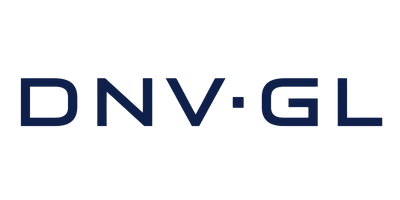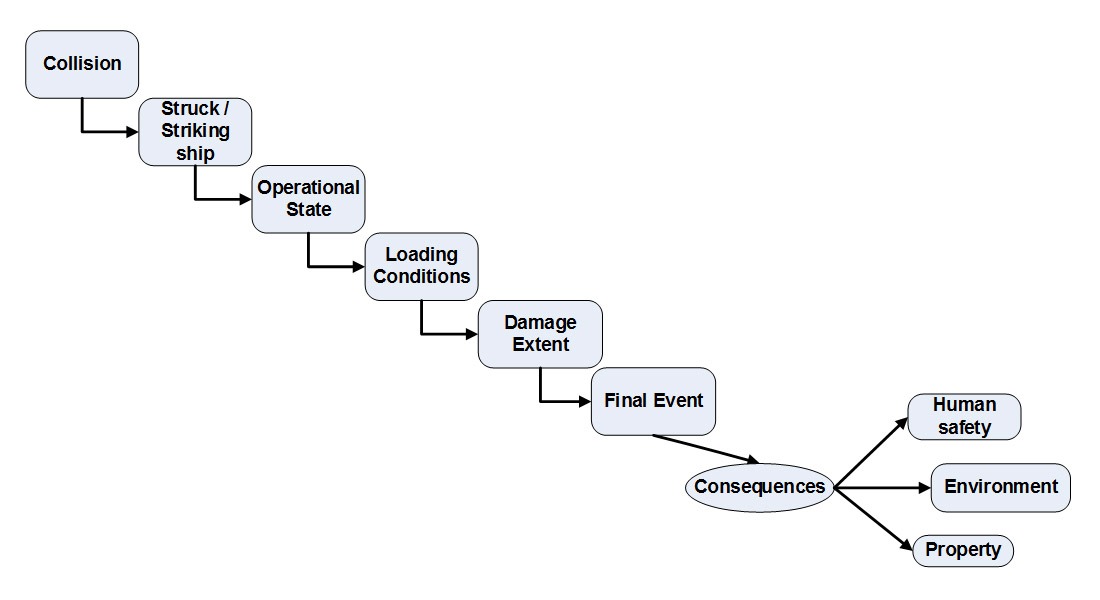
DNV GL is an international organisation for ship classification, safety and quality control. It uses PrecisionTree and @RISK software (part of the DecisionTools Suite, Palisade’s complete toolkit of risk and decision analysis tools) to determine the risk of an incident occurring to a ship or its systems and the consequences should one occur. This enables cost-benefit analysis so that informed decisions can be made about the best strategies to mitigate risk events.
Formed from the merger of DNV and Germanischer Lloyd, DNV GL is the world’s largest ship and offshore classification organisation, the principle technical advisor to the global oil and gas industry, and a leading expert for the energy value chain including renewables and energy efficiency. The company offers a wide range of independent technical expertise including surveying and the safety certification of ships, offshore structures, wind turbines and other industrial units, as well as the certification of quality systems.
DNV GL’s core purpose is to safeguard life, property and the environment by enabling its customers to advance the safety and sustainability of their business.
In this context, DNV GL is a key player in major research and development projects for the shipping industry. A core element of their focus is enhancing safety and security in shipping by pro-active use of risk assessment and cost-benefit techniques.
PrecisionTree Shows Incident and Consequences Relationship
A key activity for DNV GL’s Safety Research unit on national, international and internal projects is risk assessment for ships and ship systems. The aim is to identify risk reduction measures and deploy cost-benefit analysis to determine their economic feasibility. For instance, navigational aids will reduce the probability of collision and grounding accidents, while damage stability measures will limit the consequences of such an event, should it occur.
Risk assessments in recent years have differentiated ships by type, such as containership, crude oil tanker or general cargo ship. Each project sees the development of quantitative risk models, which can represent larger groups of the world fleet and the evaluation of the risks using internationally-agreed processes. Most projects are carried out in accordance with the Formal Safety Assessment (FSA) process developed by the International Maritime Organisation (IMO), which specifies the relevant steps for risk analysis, risk evaluation and risk reduction. Typically this requires the development of quantitative risk models that use fault trees for modelling the causes of events, and event trees to model the consequence sequences resulting from initial accident events.
DNV GL’s Safety Research unit uses Palisade’s decision tree software, PrecisionTree, to develop the risk models that apply to: (1) crew; (2) environment; and (3) property. (Risk to persons is usually quantified in terms of ‘potential loss of life’ or individual risk to the crew or passengers. Risk to the environment refers to potential damage by events such as oil spills or release of dangerous cargo. Risk to property relates to loss of, or damage to, the ship.)
In the case of investigating the risk for a specific ship type, typically the overall risk model contains sub-models addressing five accident categories: collision; contact; fire/explosion; grounding; and foundering. Each sub-model describes the relationship between the initial incident (e.g. an accident such as a collision between two ships) and the consequences. These models are based on ‘high-level’ event sequences, as illustrated in Figure 1.

Generic high-level event sequence for collision risk model
In order to limit the complexity of the risk model, representative scenarios are developed. The consequences assigned to the scenarios also consider a limited number of potential outcomes that are regarded to be representative for that specific scenario. For instance, the amount of oil spilled due to cargo hold damage will vary depending on factors such as: where on the ship the damage occurs (i.e. the number of cargo holds damaged and whether these are above or below waterline); the subdivision of cargo tanks (volume per tank); whether the tanks are filled to full capacity; and the density of the oil. In the risk model this variety of consequences will be represented by, for instance, two spill sizes.
The sequences in DNV GL’s PrecisionTree event trees are populated with occurrence probabilities (e.g. dependent probability that a ship in a collision is struck) that are derived from analysing casualty reports. These reports provide results from ship accident investigations and are available on a commercial basis or from publicly-available databases such as IMO Global Integrated Ship Information System (GISIS). Alternatively, casualty estimates can be developed using numerical models such as probabilistic damage models (estimating the probability of a certain level of damage and how likely the ship is to survive this) or passenger evacuation simulation (the modelling of passenger flow on board a vessel to estimate the percentage of passengers evacuated in a given time interval).
Dr. Rainer Hamann
Topic Manager Risk Assessment, Safety Research, DNV GL SE
@RISK Determines Accuracy of Model
However, although databases provide key input for the development of quantitative risk models, they have also some shortcomings, including:
- Lack of systematic collection of accident data, with the frequency and number of casualties often being underestimated
- Accident causes are vague or missing
- The description of boundary conditions such as the weather or the loading condition of ship is vague or missing
- The consequences in terms of fatalities/injuries, environmental pollution and damage to ship/property are often too vague or even missing
This results in increased uncertainty in the parameter values used in quantitative risk models.
In order to consider this uncertainty and make it visible in risk evaluation and cost-benefit assessments, DNV GL’s Safety Research unit uses @RISK to perform Monte Carlo simulation. This factors in the uncertainty of input parameters for the risk models, and illustrates the impact on the estimates provided for the assessment of a current level of risk, as well as the cost-efficiency of risk-mitigating measures.
Straightforward Model Building with Palisade’s DecisionTools Suite
PrecisionTree and @RISK are part of the DecisionTools Suite, Palisade’s complete toolkit of risk and decision analysis add-ins for Microsoft Excel. The software tools work together to help DNV GL’s Safety Research team get essential insights from their data.
“PrecisionTree makes it straightforward to quickly develop event trees. These are essential to our analysis when looking at how to reduce the both the number of shipping incidents and the consequences should they occur,” explains Dr. Rainer Hamann, Topic Manager Risk Assessment, Safety Research at DNV GL SE. “At the same time we have to be realistic about the accuracy of our data inputs and, by means of distributions and Monte Carlo simulation, @RISK enables us to be clear about the level of uncertainty contained in each model. Embedded in the Microsoft environment, it also allows us to incorporate standard Excel features, making it easy to use.”
Increasing Safety
In-depth risk analysis lays the groundwork for cost-benefit analysis – i.e. the assessment of whether the benefits of risk reduction strategies will be higher than the cost of implementing these. Shipping companies can therefore make informed decisions on complex issues on averting fatalities, and avoiding oil spills (with the cost of the latter increasingly taking into account the consideration clean-up costs, economic loss to related businesses such as fishing and tourism).
Risk analysis plays a key role in the design of ships and their systems in order to continually increase levels of safety.
